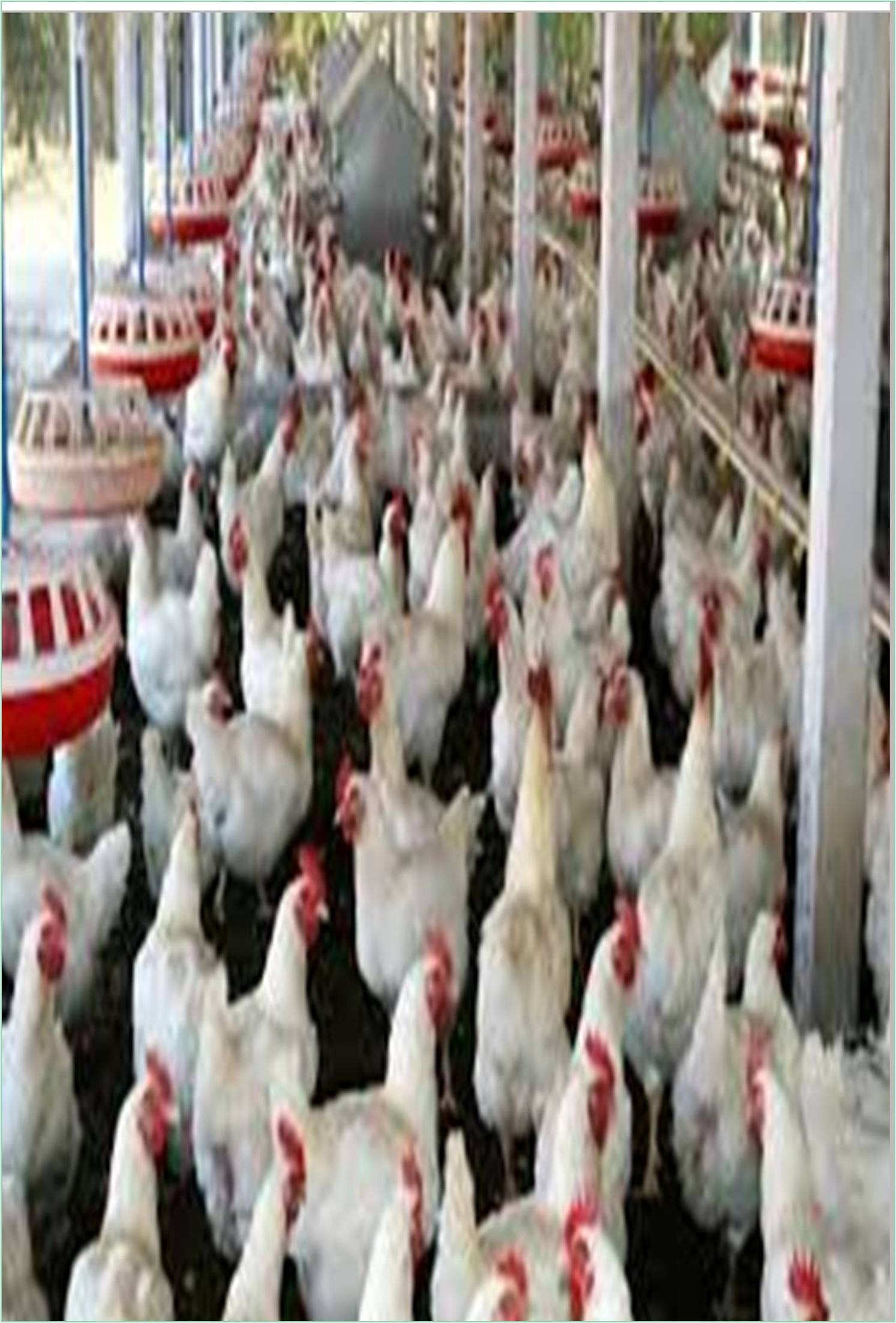



Received: 01-Aug-2022, Manuscript No. GJPFV-22-72022; Editor assigned: 05-Aug-2022, Pre QC No. GJPFV-22-72022(PQ); Reviewed: 26-Aug-2022, QC No. GJPFV-22-72022; Revised: 02-Sep-2022, Manuscript No. GJPFV-22-72022(R); Published: 09-Sep-2022, DOI: 10.15651/2449-1772.22.10.057
When compared to other livestock, poultry has a comparatively minimal environmental impact and converts feed into food items rapidly and effectively. Poultry have relatively high nutritional requirements due to their high rate of output. At least 38 dietary elements must be present in sufficient quantities and in the right proportions for poultry (Ahmad et al., 2005). The most recent known nutrient need data may be found in Nutrient Requirements of Chicken (National Research Council, 1994), and can be considered as the minimum nutrient requirements for poultry. After a thorough examination of the data, they are generated from experimentally established levels. Growth, feed effectiveness, egg production, avoiding deficiency symptoms, and the quality of the chicken product are all factors that are taken into account when determining the need for a particular nutrient. These specifications do not take a safety margin into account and assume that the nutrients are in a highly bioavailable state ( Ahmad et al., 2006). As a result, modifications should be made based on the bioavailability of nutrients in different feedstuffs. Based on the length of time the diet will be kept before feeding, variations in feed intake rates brought on by dietary energy content or environmental temperature, genetic strain, husbandry conditions (especially the level of sanitation), and the presence of stressors, a margin of safety should be added (such as diseases or mycotoxins). A necessary nutrient is water (Alleman et al., 1997). The environment's temperature, relative humidity, salt and protein content of the meal, the productivity of the birds (pace of development or egg production), and each bird's capacity to reabsorb water in the kidney all have an impact on how much water is consumed. Because of this, exact water requirements can vary greatly. Young poultry development and layer egg production are negatively impacted by water deprivation for up to 12 hours, and both young and mature poultry mortality is significantly increased for up to 36 hours. Water must always be available, be cool and clean, and do not contain excessive amounts of minerals or other potentially hazardous compounds.
Kilocalories are used to indicate both the energy needs of chickens and the amount of energy in feed (1 kcal equals 4.1868 kilojoules). Metabolizable energy and real metabolizable energy are two distinct ways to assess the bioavailable energy in feedstuffs. A correction for the nitrogen retained in the body is made in AMEn, which is the gross energy of the feed less the gross energy of the excreta. It is usually more beneficial to calculate TMEn since it includes an additional compensation for endogenous energy losses that are not directly related to the feedstock. For many of the constituents, AMEn and TMEn are comparable. However, for some materials, including feather meal, rice, wheat middlings, and corn distiller's grains with solubles, the two values are significantly different. To meet their daily energy requirements, poultry can change their feed intake over a wide range of feed energies. Temperature of the environment and level of physical activity also have a significant impact on energy requirements and, consequently, feed intake. The daily requirements for vitamins, minerals, and amino acids in birds are mostly unrelated to these parameters. The values for the required nutrients in the following tables are based on normal rates of consumption of birds in a thermo neutral environment consuming a meal with particular energy content (for example, 3,200 kcal/ kg for broilers). A bird's feed intake will drop if it consumes a meal high in energy; as a result, the diet must contain proportionately more amino acids, vitamins, and minerals. In order to give an appropriate nutritional intake based on requirements and actual feed intake, the nutrient density in the ration should be modified (Almirall et al., 1997). When raising egg laying hens for maximum egg production, proper body weight and fat deposition are crucial elements. White Leghorn chickens often have low body weights and don't tend to get overweight when given a regular diet.
Normally, feed is offered to this breed of pullets ad libitum. To avoid precocial commencement of lay in brown-egg strains of chicken, some degree of restriction is frequently used (90% of lib feeding). Feed limitation is required for broiler pullets and broiler breeders because broiler strains have a tendency to become obese when fed ad lib. To avoid deficiency, feed amounts of vitamins, minerals, and amino acids must be proportionately increased when feed restriction is used (Awojobi et al., 2009). The majority of diets used to feed chickens are "complete" in terms of nutrition and are "commercially mixed," or created by feed manufacturing businesses, the majority of which have nutritionists on staff. The formulation and mixing of chicken feeds needs expertise in computer applications, laboratory testing of recipes, ingredient quality control, and ingredient sourcing. Drug toxicity, vitamin and mineral shortages, and a lack of disease defense can all be brought on by improper combination.
Ahmad T, Sarwar M, Mahr N (2005). Influence of varyingsources of dietary electrolytes on the performanceof broiler reared in a high temperature environment. Animal. Feed. Sci. and Technol. 20: 277-298. [Crossref] [Google Scholar]
Ahmad T, Sarwar M (2006). Dietary electrolytebalance: implications in heat stressed broiler.World’s Poult. Sci. J. 62: 638-653. [Crossref] [Google Scholar]
Alleman F, Leclercq B (1997). Effect of dietaryprotein and environmental temperature on growthperformance and water consumption of male broilerchickens. Br. Poult. Sci. 38: 607-610. [Crossref] [Google Scholar] [Pubmed]
Almirall M, Cos E, Esteve (1997). Effect of inclusion of sugar beet pulp,pelleting and season on laying hen performance. Br. Poult. Sci. 38: 530-536. [Crossref] [Google Scholar] [Pubmed]
Awojobi HA, Adekunmisi AA (2009). Performance of finisher broilers fedwet mash with or without drinking water during wetseason in the tropics. Int. J. Poult. Sci. 8: 592-594. [Crossref] [Google Scholar]